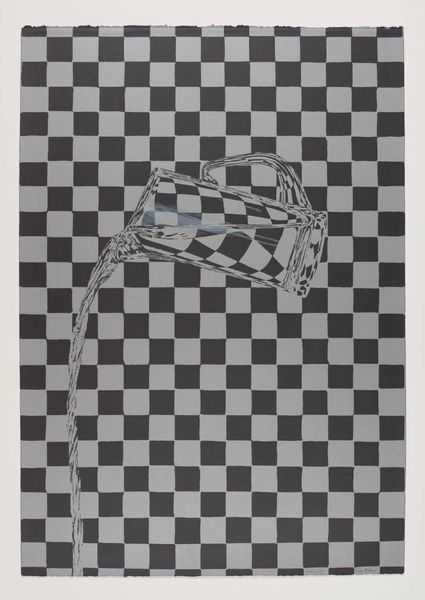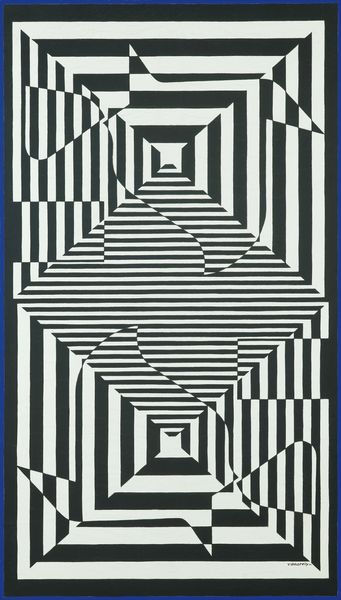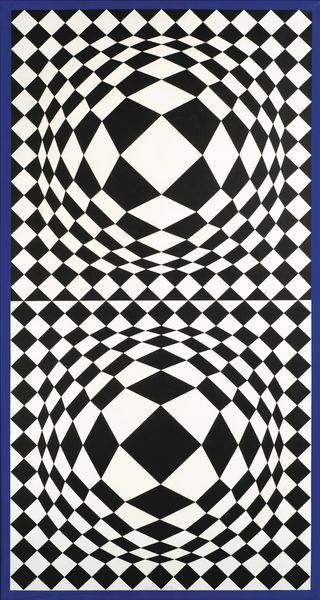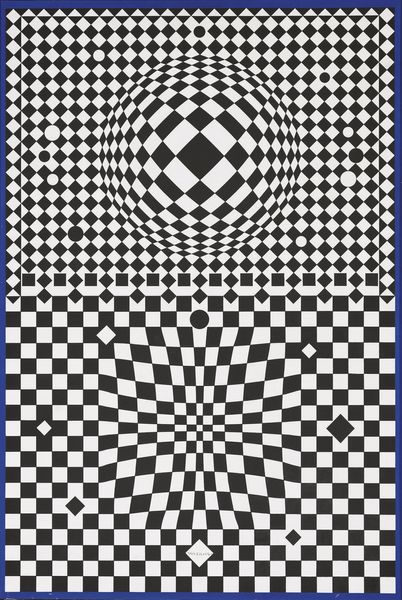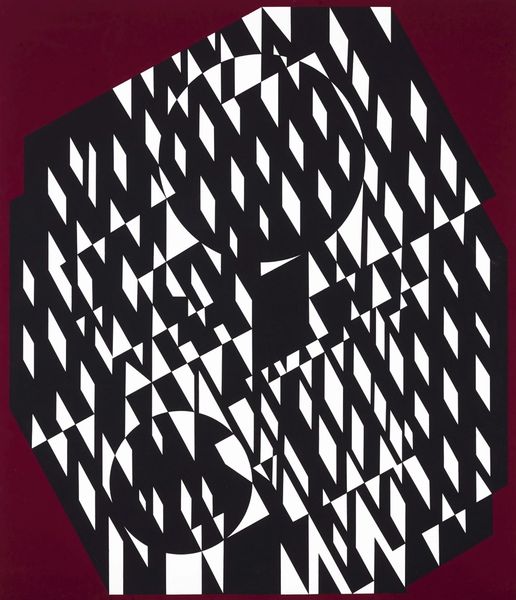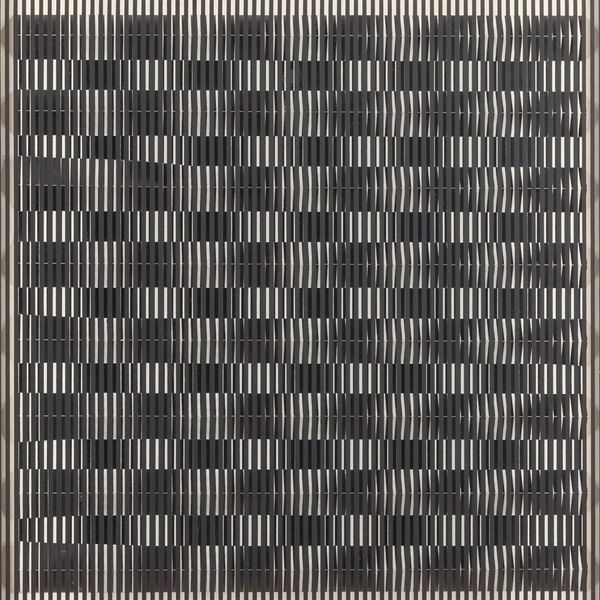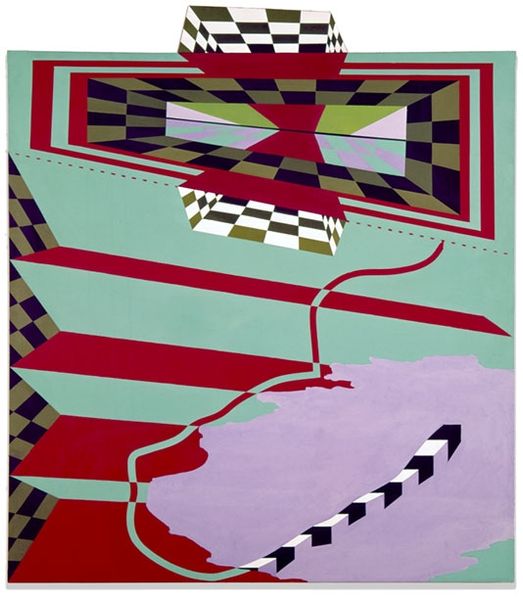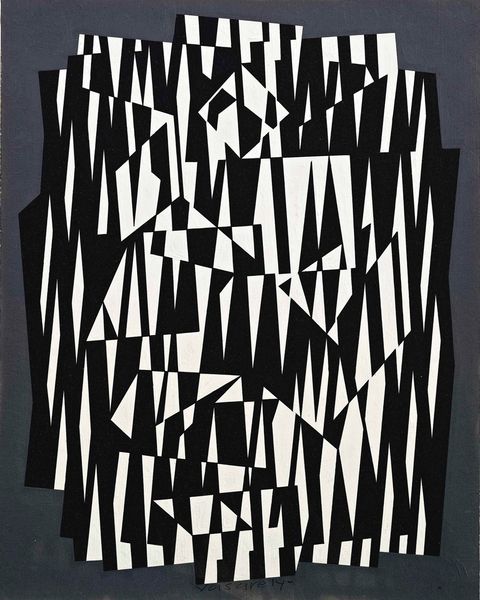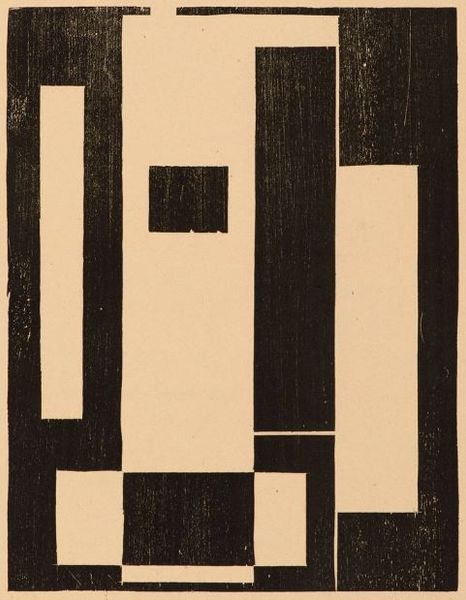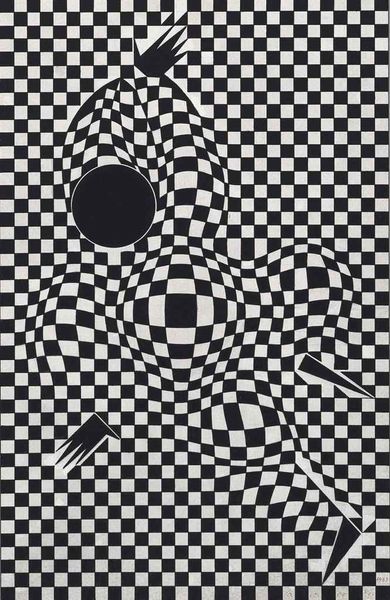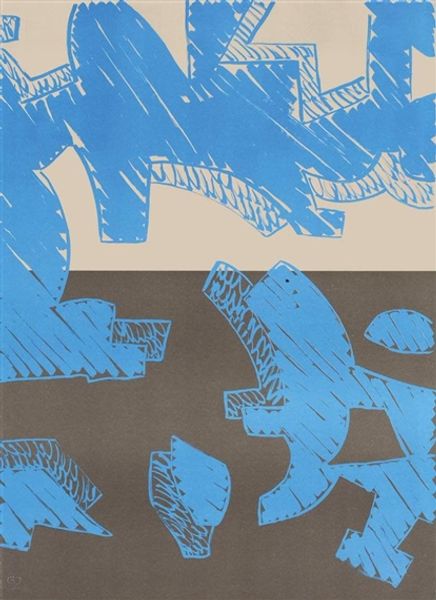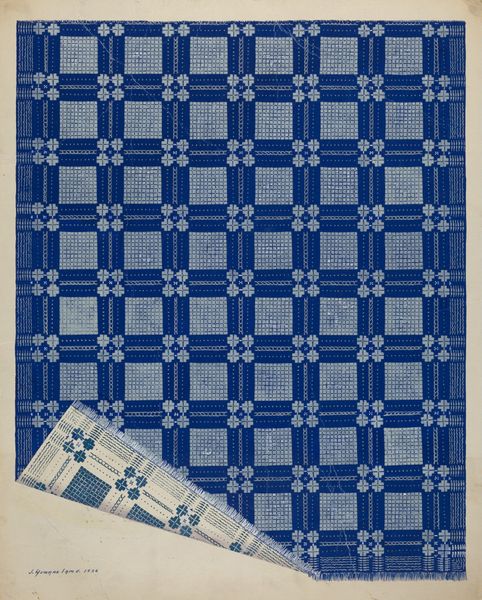
#
op-art
#
pattern
#
geometric pattern
#
abstract pattern
#
repetitive shape and pattern
#
organic pattern
#
geometric
#
repetition of pattern
#
vertical pattern
#
abstraction
#
pattern repetition
#
layered pattern
#
funky pattern
#
combined pattern
Dimensions: 61 x 41 cm
Copyright: Victor Vasarely,Fair Use
Curator: Welcome. We're standing before Victor Vasarely's "The Chess Board," created in 1935. Editor: My immediate impression is disorientation. The black-and-white checkerboard pattern is so insistent, so total, that it's almost overwhelming. Curator: Indeed. The composition plays with perception. Note how Vasarely uses geometric abstraction to depict elements of a chessboard, pushing the boundaries of representation. Editor: It's interesting to consider this within its historical context. Created in the interwar period, one can read the piece as an interrogation into a structured system that might simultaneously suggest the promise and pitfalls of rigidly hierarchical societies. Curator: An insightful connection. The work predates his more widely known Op Art explorations but contains the seeds of it: an interest in visual phenomena achieved purely through the manipulation of form. The contrasting squares generate a powerful, almost kinetic energy. Editor: I agree, there is movement, but not simply through form. Those chess pieces, so carefully interwoven into the planes, evoke strategy and struggle. The social implications, though abstracted, still reverberate: the vulnerable pawn versus the domineering queen, each square a territory, a site of potential conflict. It makes you wonder if Vasarely was pondering the looming chess match of the impending Second World War. Curator: Perhaps. Or perhaps he was captivated by the visual tension created. We can analyze how figure and ground oscillate, creating ambiguity for the eye to decode. Note the absence of gray, which contributes to the strength of the design: a polarized, even dialectical composition. Editor: Black and white as political positions, dominance and submission, winners and losers. Even the most formal qualities of artwork can serve as entry points to broader critical inquiry. And how many artists from historically marginalized groups weren’t granted the same formal recognition for their contributions? Curator: A valuable reminder to broaden the view. Considering how Vasarely employs purely visual elements to provoke such diverse interpretations speaks to his skill in deploying formal tools, whatever political metaphors or realities the forms evoked in the mind of the artist, or that we imagine onto the picture plane now. Editor: Art can challenge and question the way we interpret systems. These graphic checkerboards contain a multitude of meaning and metaphor relevant still to the present day. Curator: Agreed. These tessellated zones showcase a unique synthesis of aesthetics and historical insight that’s worth continued analysis and reflection.
Comments
No comments
Be the first to comment and join the conversation on the ultimate creative platform.
